
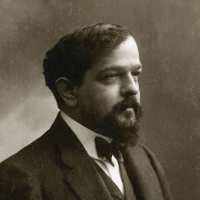
Claude Debussy
Passepied (aus „Suite Bergamasque“)
Duration: 4'
Bearbeitung: Rahbari/Gisler
Instrumentation details:
1st flute
2nd flute
3rd flute
4th alto flute
5th alto flute
6th bass flute
7th bass flute
contrabass flute in C
Passepied (aus „Suite Bergamasque“)
Translation, reprints and more

Claude Debussy
1. Flöte (Passepied (aus „Suite Bergamasque“))Type: Stimme

Claude Debussy
2. Flöte (Passepied (aus „Suite Bergamasque“))Type: Stimme
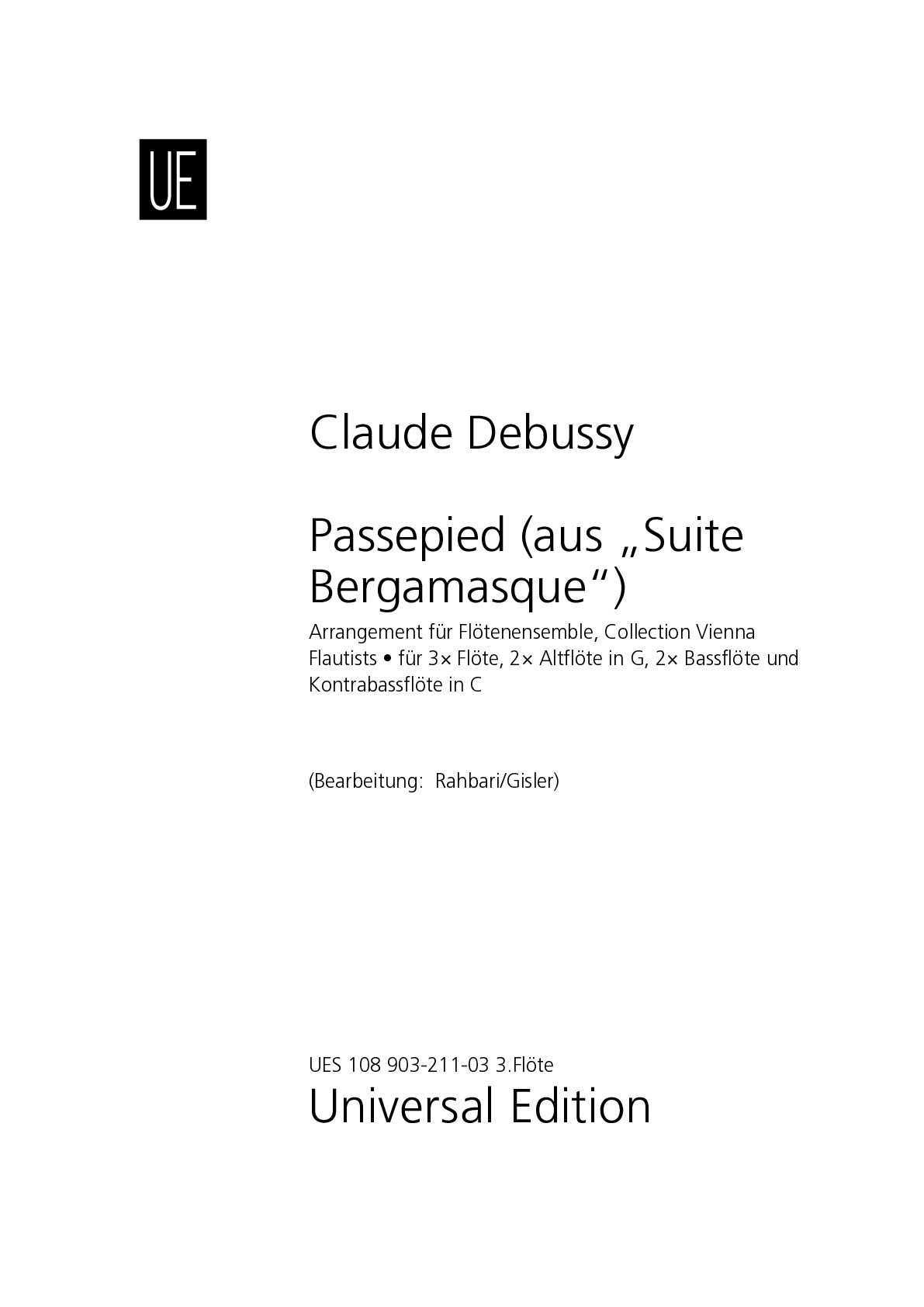
Claude Debussy
3. Flöte (Passepied (aus „Suite Bergamasque“))Type: Stimme

Claude Debussy
4. Altflöte in G (Passepied (aus „Suite Bergamasque“))Type: Stimme
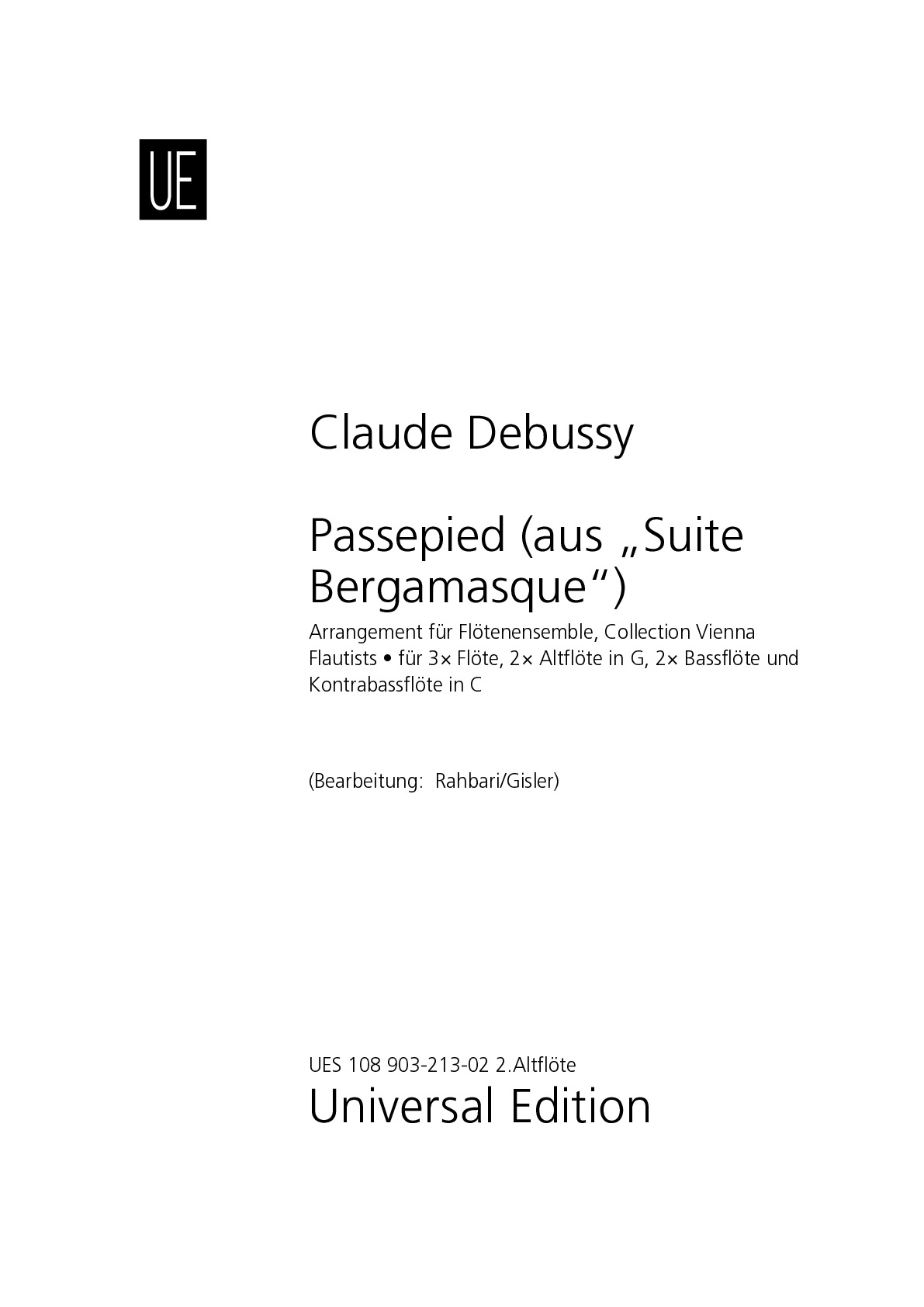
Claude Debussy
5. Altflöte in G (Passepied (aus „Suite Bergamasque“))Type: Stimme

Claude Debussy
6. Bassflöte (Passepied (aus „Suite Bergamasque“))Type: Stimme
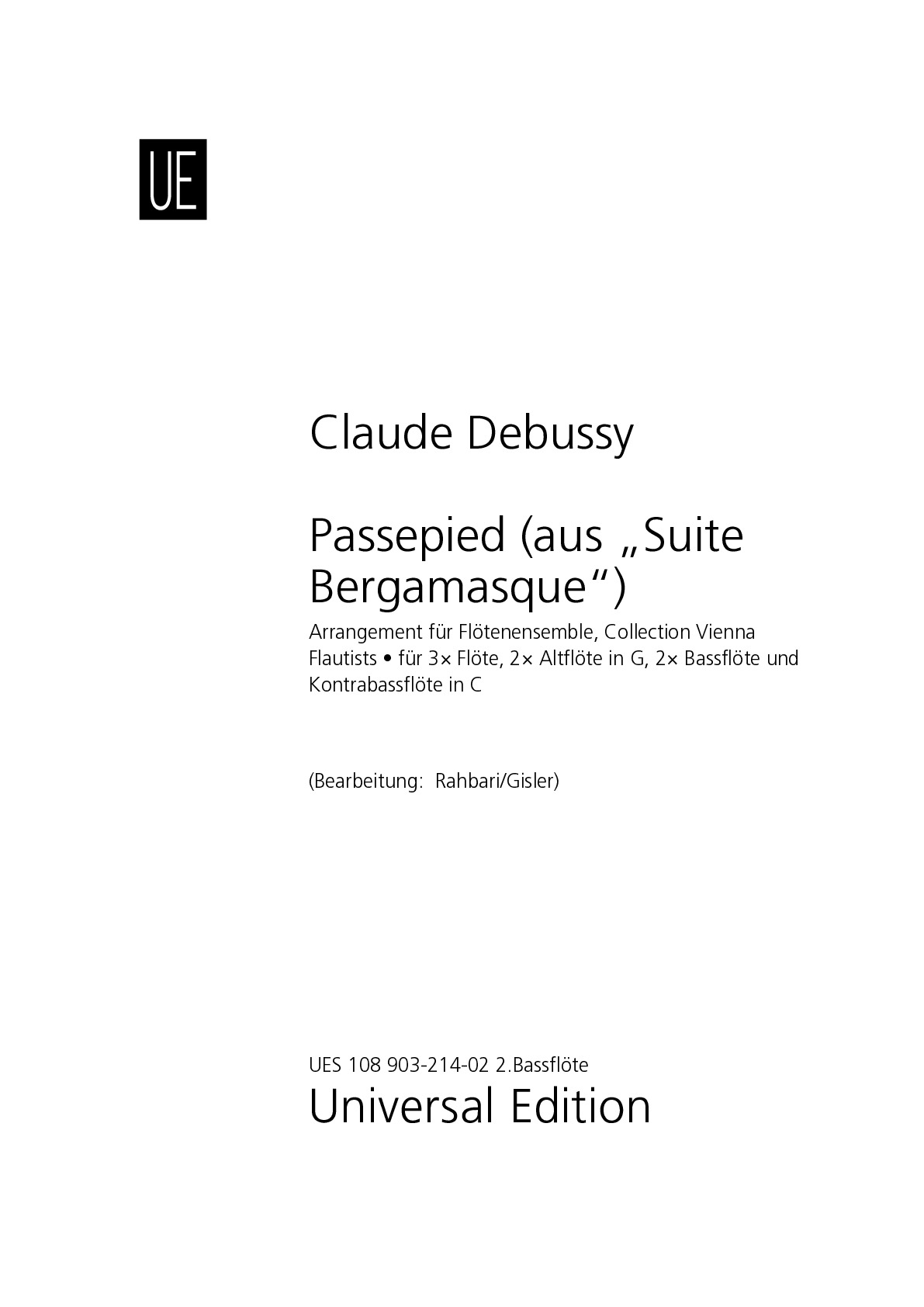
Claude Debussy
7. Bassflöte (Passepied (aus „Suite Bergamasque“))Type: Stimme
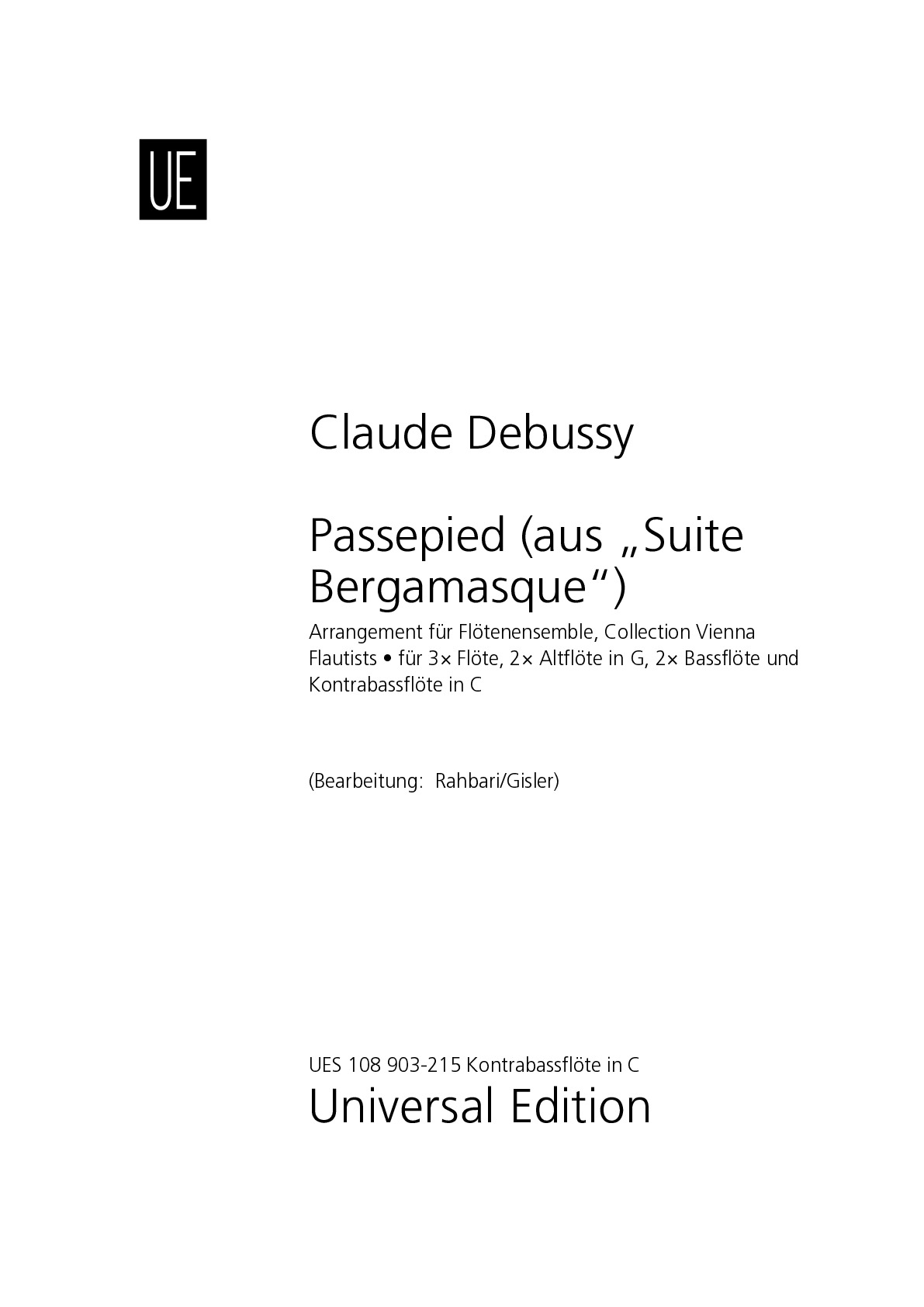
Claude Debussy
Kontrabassflöte in C (Passepied (aus „Suite Bergamasque“))Type: Stimme

Claude Debussy
Passepied (aus „Suite Bergamasque“)Type: Dirigierpartitur
Sample pages
Audio preview
Work introduction
The Suite bergamasque was written around 1890 and is one of Debussy's best-known works. The movement Passepied is now available in an arrangement for flute ensemble. The tonal diversity of the flute family is particularly well suited to the style of French music. The original sequence of movements was Prélude, Menuet, Promenade sentimentale and Pavan. In 1905, however, the four-movement work was published with the movements: Prélude, Menuet, Clair de lune and Passepied. Passepied has a tempo designation of "Allegretto ma non troppo" the main motif of the movement is a four-bar melody, a first movement, which is then supplemented with various post-movements. The movement Passepied is significantly faster than the other movements. It is in its style, like the French Baroque round dance.
